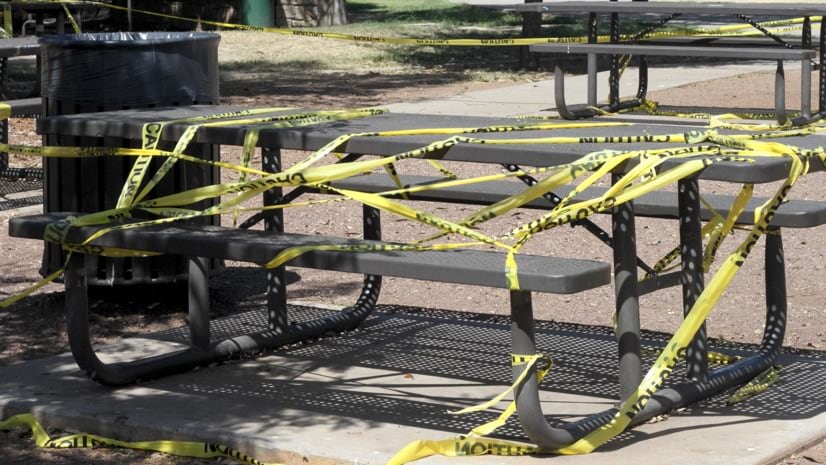
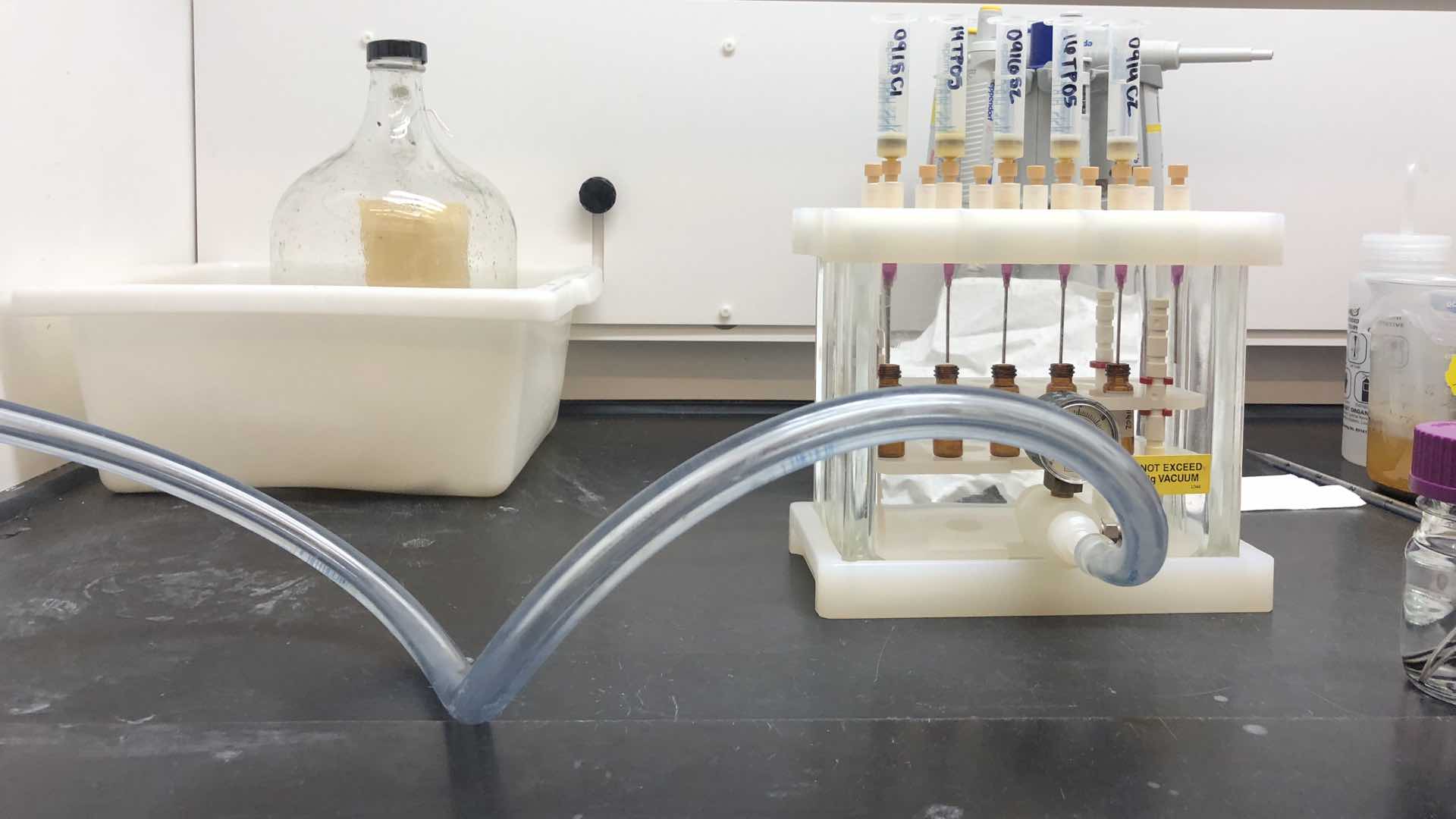
November 27, 2018 |
June 16, 2020

When city leaders in Tempe, Arizona took a more data-driven and transparent approach to management, the ethos spread across departments. As a wastewater testing partnership with Arizona State University (ASU) moved past the pilot stage, data showing levels of illegal drug use was made visible to the public to show the local impact of the opioid crisis. Now researchers have tuned this same wastewater testing system to detect bio markers in the novel coronavirus (SARS-CoV2), displaying the level of COVID-19 genome copies per liter of wastewater in the city.
“There are moments in life and politics that give you a window of opportunity,” said Rosa Inchausti, director of Strategic Management and Diversity at the City of Tempe. “The pandemic gave us the opportunity to say, ‘This is going to save lives, so allow us to do this.’”
With approval from city council and residents, wastewater testing and data transparency have helped city officials monitor the overall trend of COVID-19 concentration in wastewater, and along with other authoritative data, drive decisions about reopening. For Tempe, it’s a way to regularly, affordably, and anonymously test and monitor pandemic impact; and it provides an easily implemented early warning system.
“Wastewater testing and monitoring should be implemented in every city, so we can see and monitor viruses before they become a pandemic,” Inchausti said.
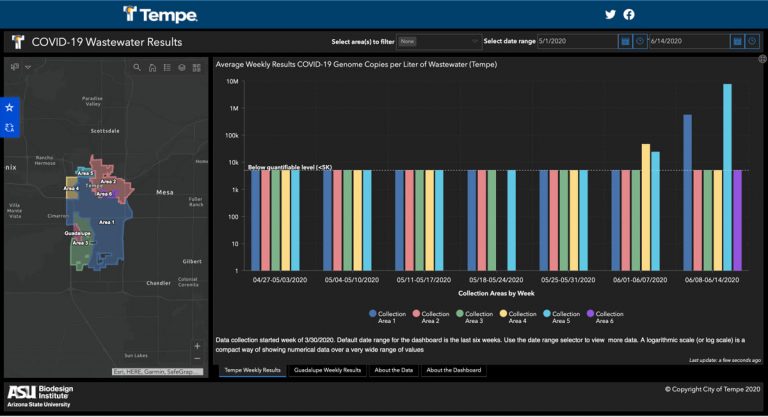
At this point, testing is done on a weekly basis at six different testing sites. The largest area (Area 1 in the above dashboard) is a wastewater treatment plant that serves more than 183,000 households. Area 1 was the site of daily tests for COVID-19 biomarkers over a two-week pilot that set a baseline, allowing tests to expand to four additional locations. The city plans to expand this effort to collect more often and in more places to gain insights on smaller segments of Tempe’s population.
“If we break up some of the collection areas into smaller ones, it would allow us to get more focused results about where concentrations are the highest and to better understand the populations being impacted,” said Dr. Stephanie Deitrick, Enterprise GIS & Analytics manager at the City of Tempe.
Much of the science of determining and calibrating biomarkers of COVID-19 in wastewater remains experimental. However, scientists around the world have seen great promise in this approach, and a global community of researchers is working to foster best practices. The ability to anonymously test a large number of people across a wide urban area through wastewater alleviates in-person testing issues such as high cost and low availability of testing supplies.
“The way we’ve been approaching wastewater testing from the start is to provide indicators of community health,” Deitrick said. “It’s valuable to the city because it provides a more holistic view and insights about what might be going on in the community.”
After hearing news reports on Tempe’s sensing capability, the mayor of the neighboring town of Guadalupe contacted Tempe officials. Guadalupe abuts Tempe’s southwest corner and has a population near 6,300 with a large minority percentage of Native Americans from the Yaqui and Pascua tribes, and Latinos. Following the Easter holiday, the town saw a spike in COVID-19 cases.

In response, Guadalupe signed with ASU’s Biodesign Institute for wastewater sensing, and case numbers will be reported as part of Tempe’s COVID-19 Wastewater Results dashboard.
“The data will help Guadalupe’s mayor explain to people why social distancing is important,” Inchausti said. “It’s also good for our city officials to see there are no boundaries to this pandemic and that we need to remain vigilant to protect citizens in our city and beyond.”
By relying on wastewater testing as an indicator of disease presence, officials can see which geographic areas have high rates and address those hot spots with educational outreach.
“It’s an innovative approach to get to intervene before it’s too late,” Inchausti said.
A Research Partner, Guiding with Science
The reason collaboration between Tempe local government and the Biodesign Institute has gone well is that both sides are engaged and interested to learn what the data reveals about their shared geography.
“We are very committed to using data to look at public health, ask community health questions, and be transparent with the community about what we’re doing,” Deitrick said.
Tempe leaders see the city as having come a long way, taking a data-driven approach in a relatively short time.
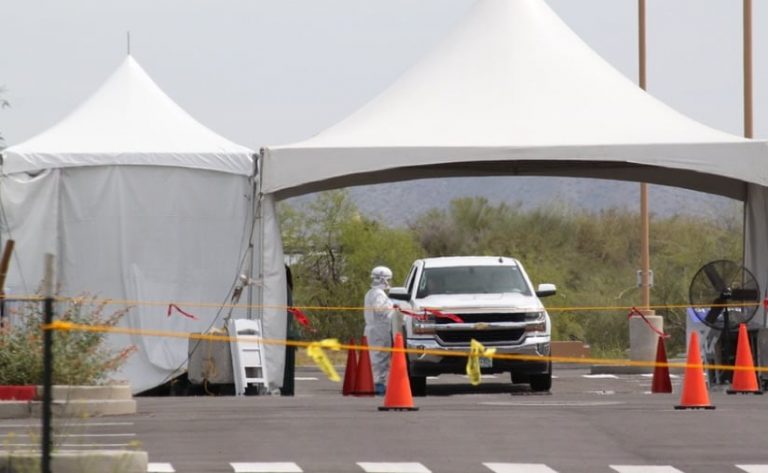
“I’ve been with the city for 27 years, and we have a great story from rags to riches when it comes to data,” Inchausti said. “We really had nothing until four years ago when the mayor and council created a new culture of being data driven in how we look at the budget, resources, and services.”
This open data push also led to the creation of the city’s Department of Strategic Management and Diversity, which forged a tight alliance with the city’s geographic information system (GIS) department. The GIS team collects place-based data about city assets and the residents they serve.
“We want to make sure our community is part of the city’s decision making process, especially when it comes to budget allocations of city services. Data transparency helps the city and community make stronger decisions and in the process it builds trust with local government,” Inchausti said.
Now wastewater is seen as an important input to ongoing health monitoring across the city. Inchausti and others hope to begin testing for more diseases in the future, such as the rate of infections during the annual flu season.
“As everything starts to reopen, we’re eager to look at test data against a timeline to see if cases are staying consistent or going up,” Deitrick said.
Just recently, the dashboard picked up an indication that COVID-19 infection rates have returned to Tempe, matching news reports that cases are spiking in the state.
Like most cities, Tempe expects COVID-19 activity to expand and contract until a vaccine and herd immunity take hold. Meanwhile, wastewater testing is giving the city a sense of when to reopen and when to urge greater social distancing.
See the COVID-19 GIS Hub for location intelligence resources. The Coronavirus Response solutions page provides a collection of maps and apps that can be used by agencies to understand the virus’s impact and share information about the pandemic with the public.

November 27, 2018 |

June 2, 2020 |
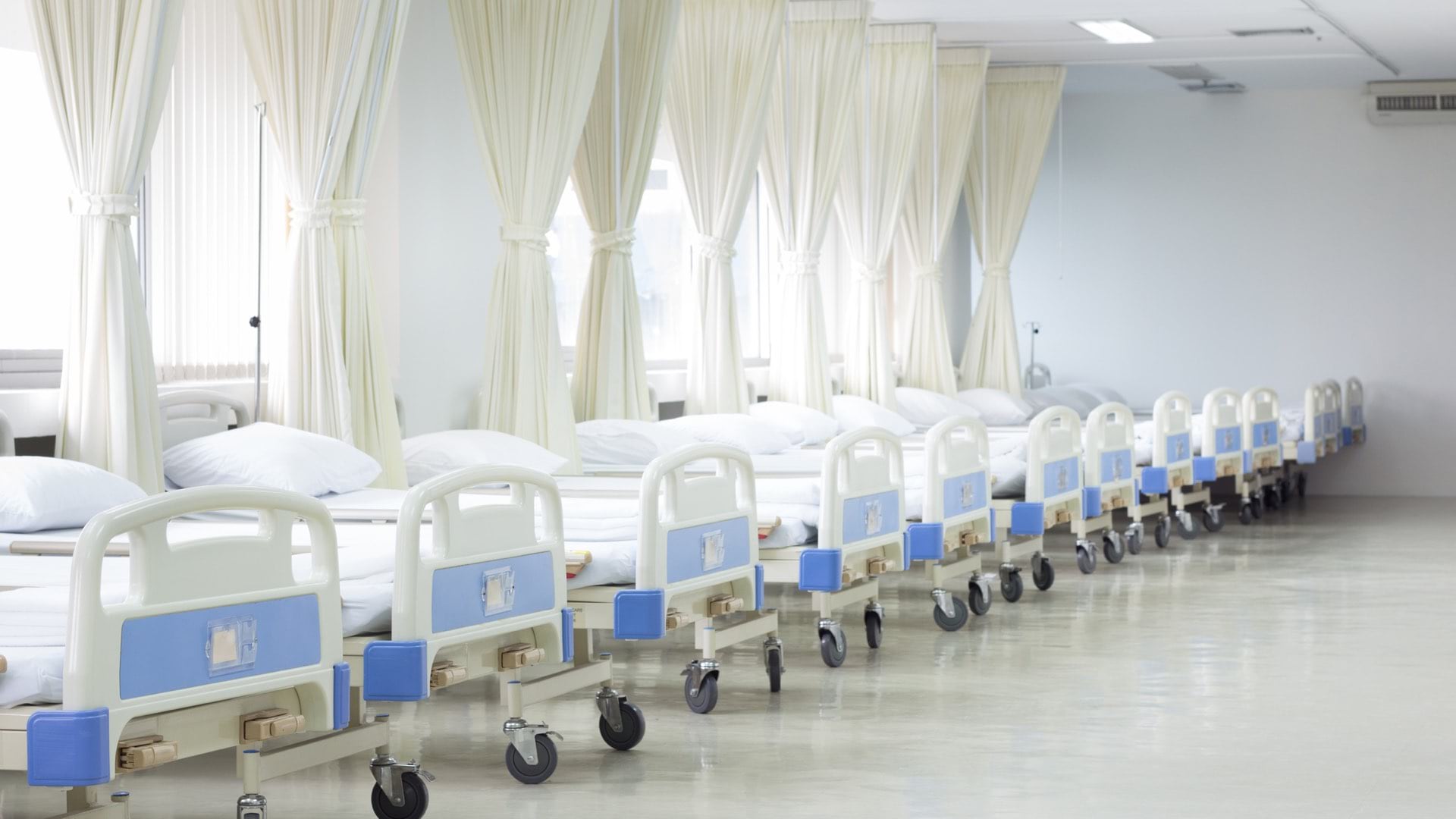
April 7, 2020 | Multiple Authors |